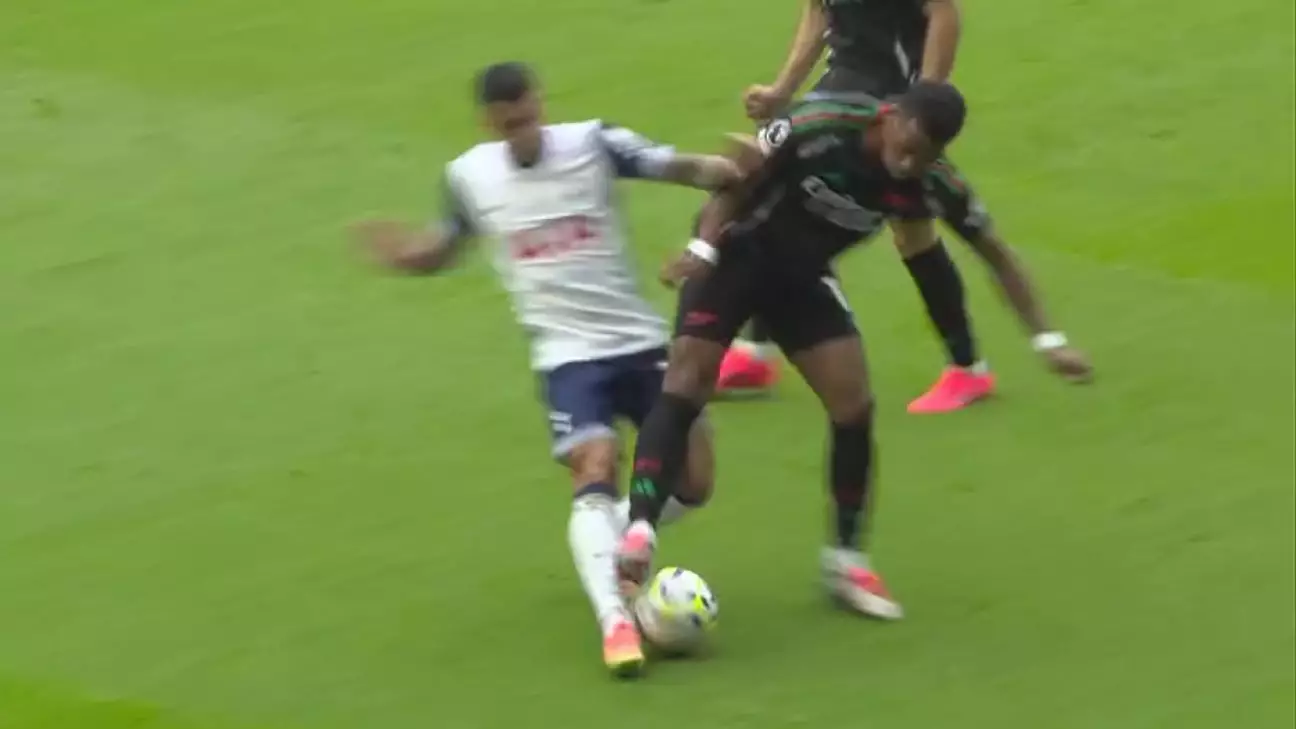The implementation of the Video Assistant Referee (VAR) in the Premier League has been far from smooth, consistently sparking debate among players, coaches, and fans alike. While it was initially introduced to enhance the accuracy of officiating, the continued controversies reveal a nagging complexity underlying its application. The nuances of VAR decisions not only illuminate the layers of decision-making involved but also underscore a profound disconnect between the intent of the technology and its execution on the pitch.
VAR’s introduction aimed to minimize egregious errors in officiating, addressing concerns over crucial moments that can turn the tide of matches. Despite the promise of improved accuracy, the VAR process frequently invites scrutiny and second-guessing regarding its effectiveness. Each decision involves a comprehensive review of a plethora of factors, from the nature of a foul to the intricacies of offside rules. As we dissect ongoing incidents, we can better appreciate how the VAR system operates yet recognize its imperfections.
A case in point was Jurriën Timber’s challenge on Tottenham’s Pedro Porro. Although Timber received a yellow card for the incident, it was later confirmed through VAR that a dismissal was unwarranted. This controversy resonates particularly because it was preceded by a similar situation between Curtis Jones and Yves Bissouma the previous season, where VAR intervened to issue a red card. The critical distinctions lay in the force, intent, and manner of the tackle. These differences exemplify the rigidity and subjectivity inherent in interpreting the laws of the game. Ultimately, VAR must assess not just the act itself but the implications and context surrounding each incident, fostering an understanding that can seem nebulous to the casual observer.
Handball decisions remain amongst the most contentious areas of VAR oversight. A notable example is Cristian Romero’s situation during an encounter where a header from Kai Havertz rebounded off his arm. VAR concluded that no penalty was warranted, ruling that Romero’s arm position was natural given his body movement and did not constitute an infringement. This interpretation often elicits further ire when replayed, revealing the fissures between fans’ expectations and officials’ judgments.
The subjective nature of what constitutes a ‘natural’ position continues to incite debates, as many feel that the standards must be unified and transparent. The implementation of semi-automated offside technologies may soon alter how these controversial moments are adjudicated, yet the methods and mechanics of VAR still require careful scrutiny.
As teams push for every advantage, the issue of offside decisions has thrust VAR back into the spotlight, leading to significant ramifications. For instance, Crystal Palace’s disallowed goal against Leicester City showcased the difficulties in pinpointing precise player positions with current technologies. Manager Steve Cooper’s request for clarity underscores the acute reliance on visual evidence in a sport often decided by fractions of an inch.
What’s particularly troubling is the imminent introduction of semiautomated offside technology, which aims to provide greater accuracy but also brings concerns about inconsistency. Matches played under different technological standards within the same season present an overt contradiction that could breed further discontent. Such inconsistencies leave clubs and fans wondering about the integrity and reliability of officiating, especially in critical match situations.
Another perplexing episode involved Aston Villa’s equalizer based on an argument concerning offside. The exploits of Ollie Watkins in navigating a bizarre defensive error emphasize the thin line between a goal ruled allowed and one potentially disallowed. The essence of this conundrum resonates with larger discussions on player impact—how an offside player’s movement can inadvertently lead to advantages for attacking players becomes a labyrinth where every scenario is unique yet intertwined with established principles of play.
In examining another incident, such as Jack Stephens’ red card for a high challenge on Alejandro Garnacho, it’s essential to recognize the VAR system’s role in validating or overturning decisions made in real-time. VAR’s capability to reassess these high-stakes calls serves as a lifeline for fair play, although it is also clear that such interventions can complicate narratives for teams and their supporters amid contentious moments.
Looking Forward: Bridging the Gap Between Technology and Tradition
As VAR persists in the Premier League, the overarching theme remains the intricate relationship between evolving technology and traditional football culture. While the intention behind VAR is undoubtedly noble—aiming for clarity and accuracy in officiating—the practical execution often complicates rather than clarifies significant game moments. Moving forward, additional focus is required to harmonize the emotional experiences of supporters with the technological capabilities at officials’ disposal. This reconciliation will remain vital as football evolves within this modern landscape, confronting challenges that continue to draw attention far beyond the final whistle.
In closing, the ongoing journey with VAR reveals not only the inherent challenges of modern officiating but also the unmistakable resilience and passion within the world of football—a sport forever evolving, yet steadfast in its rich, storied tradition.

